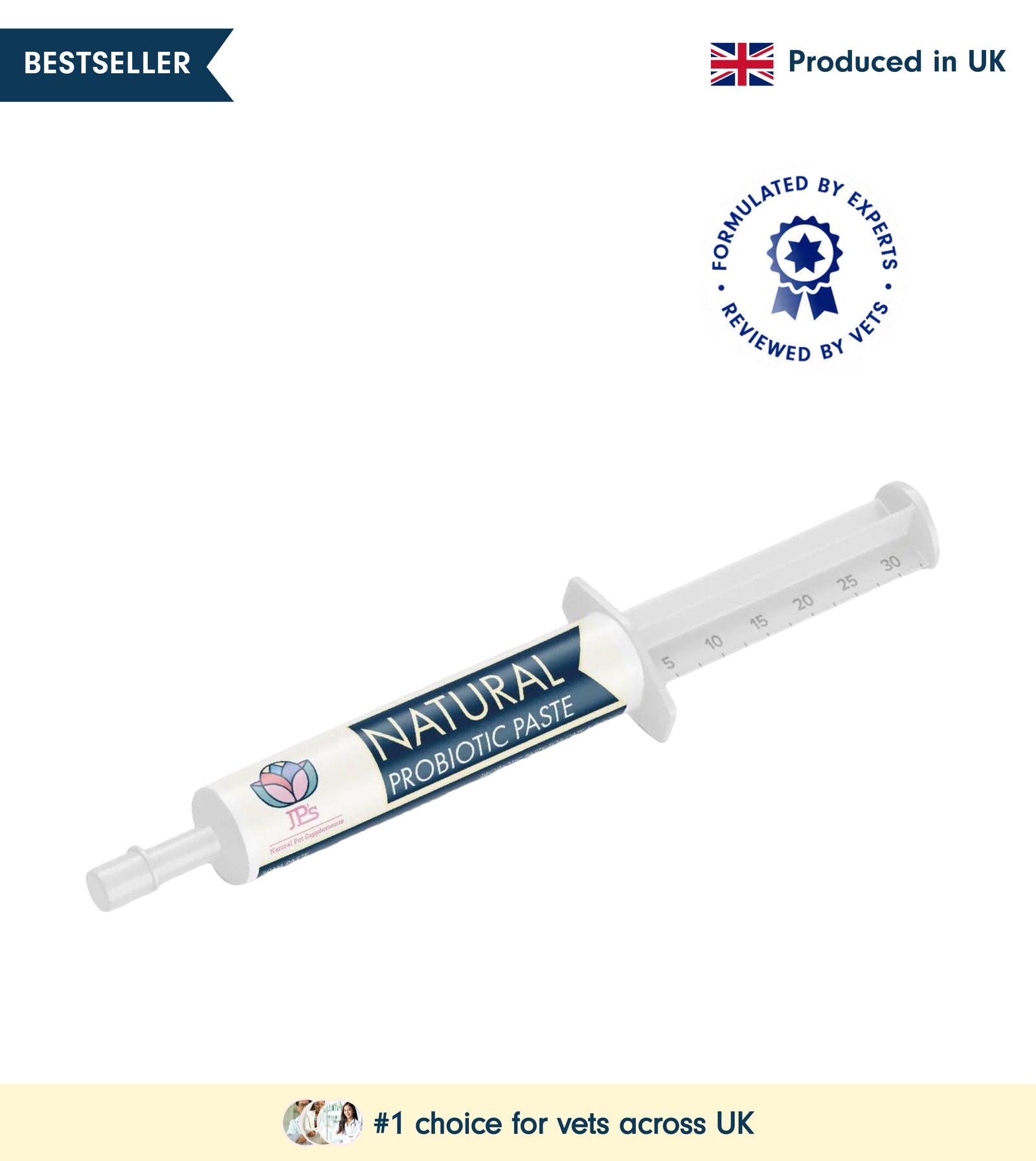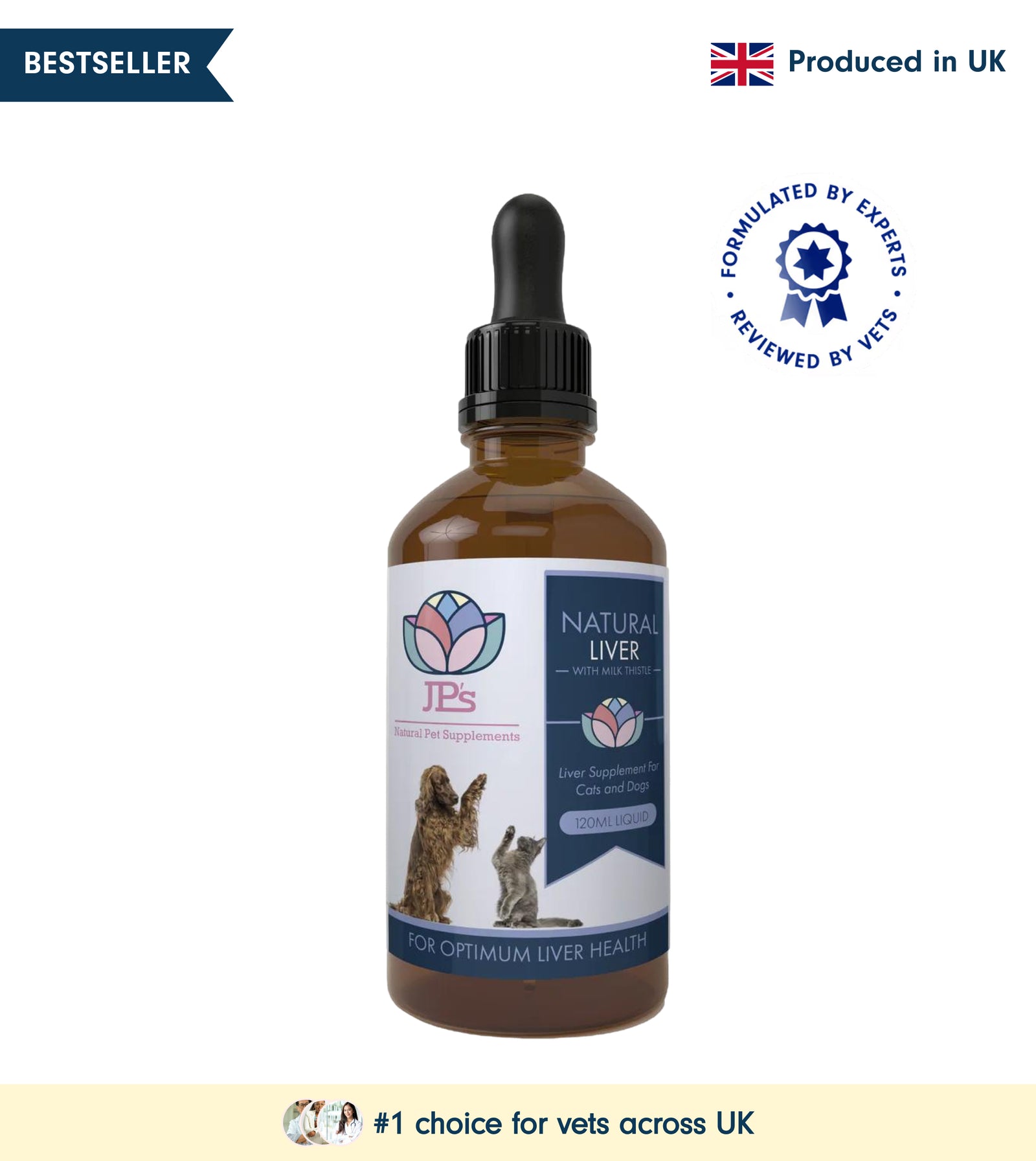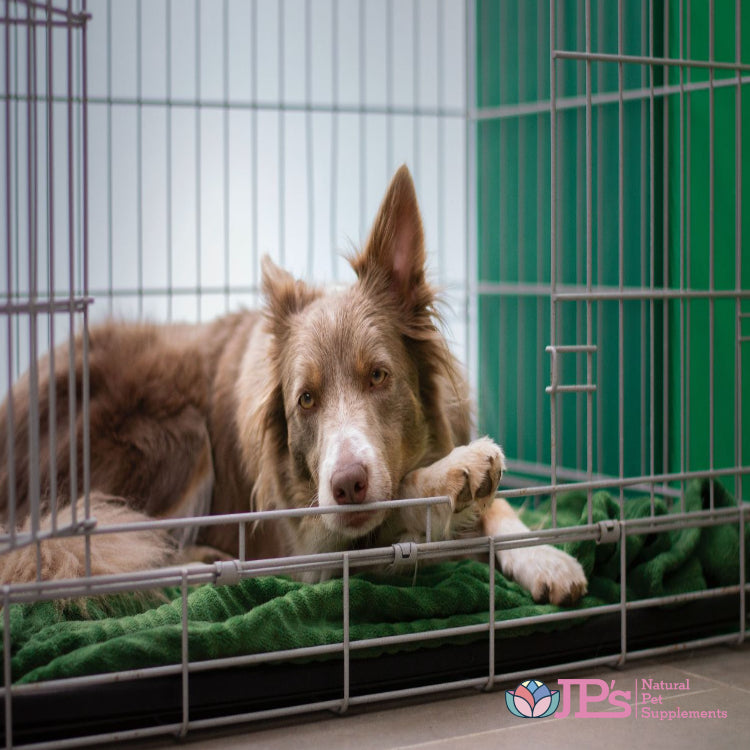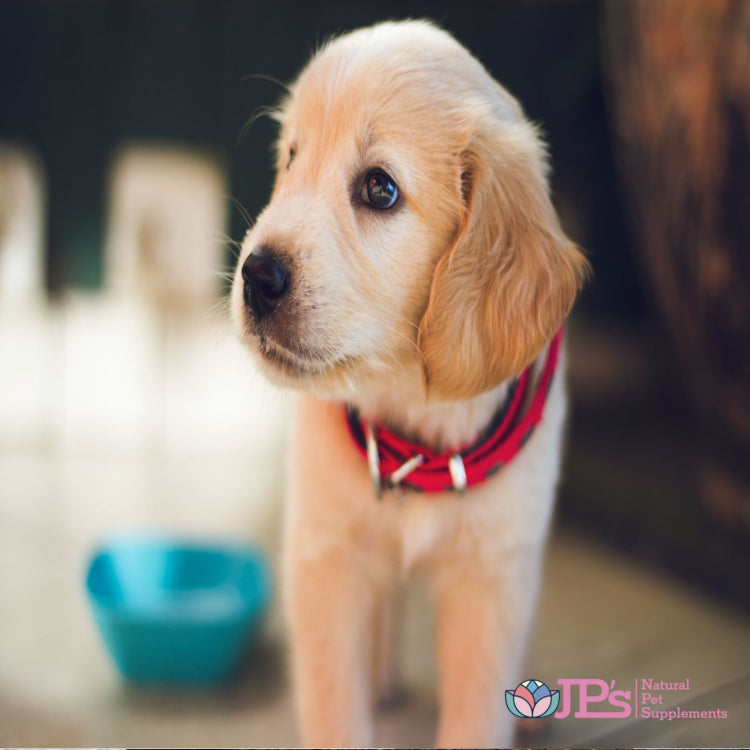Separation anxiety is the most common reason for stress in dogs—our dogs like having us around. Dogs are social animals, but they need to learn that it's okay to be left alone at home sometimes. However, some dogs find this more difficult than others. Some owners struggle to leave their dogs and want to take them everywhere. This is just human emotion, which isn’t healthy for the dog in the long term. This can lead to future attachment issues. This must be the most common call I receive in dog training. This blog is about starting training early with your new puppy, so hopefully, you won’t encounter situations like separation anxiety or attachment issues. For really severe separation anxiety cases, you should NOT just lock your dog in a crate and go out shopping; you will need help from a dog behaviourist.
What is separation anxiety?
This is when your dog feels anxious when they are left alone and may display unwanted and destructive behaviours. Separation anxiety can develop in dogs for several reasons, but the most common cause is that they have never been taught the correct way to cope when left alone at home. We must remember, though, that there are different types of separation anxiety. This means that each dog may need to be treated as an individual, so treatment options may differ based on the type of behaviour a particular dog is exhibiting. This is why I recommend getting help from a dog behaviourist.
Training your dog or puppy at home is the first step.
Teaching your puppy or dog to be alone should begin in the home environment, with you still present before you start leaving the house for work.
How would you begin the training process at home?
This can be achieved through crate training, a playpen, a designated kitchen area with a baby gate in place, or a part of the house where your dog or puppy feels comfortable. I have to give options because some owners won’t crate train. Crate training involves gradually building your dog or puppy's confidence to spend short periods alone while you’re still in the home. Owners can sometimes make the mistake of using the crate only at nighttime or before they leave the house; this can inadvertently become a trigger for their dog or puppy. They can end up refusing to go into the crate or playpen. If your puppy or dog has constant access to you throughout the day, it will make your training more challenging.
Additionally, it's beneficial to practice putting your puppy or dog in a crate or a dedicated area whenever possible. This will help calm your puppy or dog, allowing them to have a restful sleep. For example, put your puppy or dog in the crate or behind a baby gate while you clean the house or work from home. This means your puppy cannot follow you around the home and needs constant attention. Puppies and dogs need undisturbed sleep time. This is essential for your puppy and dog’s well-being and behaviour. Dogs need roughly between 12 and 14 hours of sleep per day. Larger breeds can sleep even longer, up to 18 hours a day. Meanwhile, puppies are likely to sleep for even longer during the daytime. An overtired puppy or dog can create behaviour issues.
You would begin the crate training with very short periods of separation and slowly increase the time. Always ensure that your dog’s needs have been met before training, which includes exercise, training, and toileting.
Begin training in the same room as your puppy or dog.
Ensure you start your crate training by being present in the same room as your dog or puppy when they are resting in their crate or playpen. Avoid having a conversation with your dog or looking at them constantly; stay calm and relaxed. It may help to give your puppy/ dog a food stuffed Kong or something to chew; this will help them relax and see the playpen as a positive place to be, but it’s more beneficial in the long term if you can get to the point of not having to put something in the crate like a chew because we want them to relax and have off switch, especially if you’re puppy or dog are overtired, so if your puppy or dog is quiet happy without chew or enrichment in the crate or playpen. They are more relaxed, that’s brilliant. Crates and playpens should be a place your dog or puppy enjoys going into; it’s not a place of punishment; it’s a positive tool if used correctly. For example, if your puppy is over-tired, it’s not a punishment to put them in the playpen or crate for sleep time. So, don’t think of it as punishing your puppy or dog; it’s essential for their well-being.
Next Level
When you think your dog or puppy is ready for the next stage, you can eventually start leaving the room, making sure departures and returns are low-key Please don't make a big deal; you can reward your dog for staying calm by dropping some treats through the top of the crate, rather than making a big fuss. Remember, when you let your puppy or dog out of the crate, make sure they are calm before opening the crate door. If they are jumping up or barking, and you let your puppy or dog out of the crate, you have now rewarded excitable behaviour, and the dog has now learned that this behaviour works, and my owner lets me out of the crate.
Benefits of Crate Training Your Puppy and What I Typically Hear from Owners
Benefits include building your puppy's confidence, and allowing them to get undisturbed sleep.
You’re teaching them life skills for the future.
I often hear from owners who say they don’t want to crate their dog because they love their puppy or dog; they think their puppy won’t love them anymore, and it isn’t kind.
Even if you don’t want to use a crate for your dog, it's still a good idea to get your puppy or dog accustomed to them. Why?
We never know what’s going to happen in the future; your dog could end up with an injury and need two weeks of cage rest. When your dog goes to the vet or groomer, they are usually put in a cage, which can be stressful if they haven’t been in a crate before. You may need to travel in the future, and your dog will require a crate or cage. There are so many benefits to your training journey by using a crate.
We can also train our dogs to go to the place when they are not in the crate. Don’t just rely on crates; we can train our dogs to be calm when around us in the home.
Crate training is helpful, but we also need to teach our puppy or dog when they are not in the crate! We need to train and teach our dog/ puppy to live with us calmly in the home. When they are out of the playpen or crate, we should teach them how to remain calm when needed, especially when visitors arrive or you are busy working from home. The place exercise is another valuable life skill to train our dogs so they can occasionally be out of our bubble. By training your dog in the place exercise, you will help your dog with attachment issues. Practice training your dog, the go-to place exercise. Begin the exercise somewhere quiet in the home environment; you can introduce a mat, platform dog bed, or a designated spot and reward your dog for any interest shown in the mat (or whatever you're using for the exercise) Gradually shape the behaviour by rewarding them for getting closer, such as them stepping on the mat or bed, and eventually lying down. Once your dog begins to understand the exercise, you can start adding a verbal cue, such as "Place." Only when your dog is ready for the next level can you practice with distractions and distance.
Detailed Breakdown.
Choose a mat, bed, or platform for the place to exercise in a room without distractions, let your dog investigate it, and reward them with a tasty treat for interacting with the mat. This could be either sniffing, pawing, or going on the mat with front paws (preferably, we want all four paws on there)
Shape Behaviour.
You can use a lure to guide your dog onto the mat. Reward when they step on the mat; reward heavily if they lie down on the mat (place treats on the mat)
Add Duration & Distance
Once they understand the behaviour, start adding duration (longer stays on the mat), then gradually increase the distance from which you send them to the mat.
CUE
When your dog reliably goes to the mat and stays, introduce the verbal cue, e.g., "PLACE."
Start saying the cue just before guiding them onto the mat. Eventually, your dog will associate the cue with the behaviour.
Proofing
Practice in different locations around the home. When your dog’s ready, you can then practice with distractions.
Release Cue
Choose a release word, such as 'finish' or 'free,' to let the dog know they can leave the mat.
If you find your puppy is struggling, don’t get frustrated; go back to the start and proceed at your own puppy's or dog’s pace. It’s not a race.
Access and attention are readily available.
While training your dog in the 'place' exercise, remember to practice keeping your dog or puppy off the sofa with your 'off' cue. If your dog has constant access to the settee and attention from you, this won't help with your place exercise or crate training. Think about it: why would your dog want to go to a place or crate and relax when they can have access to the settee sitting next to you, constantly receiving affection? This must be balanced correctly. There is nothing wrong with your dog going on the settee when we have a trained dog, as they understand basic cues such as 'UP' on the settee and 'OFF' on the settee. We are inviting them to do so instead. I like to teach the UP CUE and OFF cues. Remember why you are practising this exercise (because your dog has separation anxiety or attachment issues), so think short-term, not long-term. We want our dogs to be able to cope when we leave home, so we need to establish boundaries and maintain a good, healthy relationship with them. If you’re struggling to remove your dog from the settee, attach a light indoor training line only when supervised.
The Place exercise: What else can I do in the short term to make the cue place more inviting?
I like teaching dogs the place exercises, where your dog learns to make good choices independently, and you're building their confidence by not being with them constantly. Once your dog starts to understand the exercise, you can even try placing a remote treat dispenser to reinforce the behaviour and encourage your dog to go to his happy place more often. This won't be a long-term solution, but it can help you get started at the beginning of your training. Since the dispenser has a remote, you can activate it when it arrives at the location. When your dog fully understands this exercise, you can begin to fade the lure and rely solely on your verbal cue. In the long run, we wouldn’t want a noisy dispenser to disturb your dog's sleep and peaceful environment. This is the place we want them to learn to have an off switch and be calm. I don’t recommend using the dispenser if you have other dogs in the household or if you have resource-guarding issues.
Cameras in the home
I recommend getting a dog camera for the home.
The camera allows you to observe your dog’s behaviour when you're practising your training protocols. This means you can watch your dog or puppy from another room and enter the room before your dog or puppy becomes stressed. The whole point about this training is that we are building up a safe experience for your dog being home alone, the indoor security camera allows you to monitor your dog's body language and behaviour when you leave the room so your able to see if they’re coping. The camera can help you know if you're making progress in your training.
What are possible contributing factors to separation anxiety issues?
🐾Owners who get a puppy and take them everywhere with them at the beginning, such as to the bed, without establishing foundational boundaries, like crate training, can end up with a Velcro dog that struggles to cope when left alone.
🐾 Re-homing, such as a dog who has been rehoused multiple times or even once.
🐾A dog who has been put through a traumatic separation, such as the loss of a family member or animal.
🐾The owner has an extended hospital stay, separating the dog from its owner.
🐾A dog who has experienced some trauma while left alone.
🐾Old age, dementia
🐾Noise phobias
🐾Arrival of a new baby.
🐾House move.
🐾 Pain-related issues.
🐾A dog who is bored and frustrated and does not have enough exercise, brain stimulation, or breed fulfilment.
🐾Lack of training and boundaries.
🐾Some dogs go through fear periods during adolescence.
🐾Giving our puppy or dog consent attention in the home so they don’t feel they can cope when you leave them. It’s not healthy to have our dog or puppy constantly in our bubble.
How do I know if my puppy/ dog has separation anxiety?
🐾Barking, howling and whining
🐾Chewing and destruction of surroundings
🐾Shaking and panting
🐾Pacing
🐾Peeing or pooing
Health checks
Please ensure your dog receives a comprehensive health check from your veterinarian to identify any potential health issues.
Never punish your dog’s separation anxiety because they are in a state of extreme emotion. What else can you add to your dog’s separation anxiety protocols? This is not a cure, but it can aid alongside your training, especially when combined with a good, healthy diet such as raw feeding.
Sometimes, training and other remedies aren’t enough to ease your pet's separation anxiety; in some cases, you may need to consult your Veterinary Surgeon, who may prescribe medication.
Diet.
A good diet is essential for your dog’s gut microbiome, so a raw, fresh diet is essential. This is because the gut-brain axis via gut microbiome plays a big part in a dog’s behaviour. A good omega-3 supplement that contains elevated levels of essential fatty acids can be added to your dog’s food.
A variety of natural calming treats are widely available, such as L-Tryptophan and CBD with no THC. This is popular, but you need to find a good organic source of CBD oil; you don’t want synthetic CBD.
Dog calming sprays utilise pheromones to help soothe stressed dogs. Alternatively, a diffuser can be used with calming essential oils, such as frankincense, chamomile, and lavender. It’s something you can try; remember, every dog is different, so this may not work for every dog. CDs with calming music for dogs play low-frequency (432Hz or 528Hz) white noise, and Anxiety beds are shaped like doughnuts with raised edges, making dogs feel secure. Anxiety rap dog coats are also available.
Exercise
Physical activity is the best and most enjoyable way for your dog to release energy, especially for high-energy breeds.
Before you leave the house, please make sure your dog has received exercise, training, toileting, and enrichment.
Mental workout
Dogs need a job to do, so cognitive challenges are beneficial, especially for working breeds. Dogs are content when doing a job for which they were bred, so breed fulfilment is essential.
Decompression days. (quiet places)
Taking slow walks through woodlands or fields, allowing your dog to explore all the scents, is perfect.
If you can’t get outdoors, try hiding some treats in the garden or around the house, buy some dog puzzle games, and make them work for treats.
You can invest in food puzzles for some calming relaxation; please make sure to use them randomly when you're at home, not just when you're leaving home. We don’t want it to become a trigger for you to go.
Could you make everything positive around the crate?
Final Thoughts
Start slowly with crate training (start with the door open, building up slowly). Place the crate in a familiar area with the open door, let your puppy explore the crate, and toss some treats inside the crate (don’t close the door over) praise your puppy for entering the crate, feed your puppy or dog in the crate, place food stuffed kongs to encourage being in the crate or playpen. Don’t rush the process. Ensure your crate is cosy. Begin with very short periods of time with the door closed. Supervision is crucial.
The length of time a puppy can be left alone depends on its age, temperament, and level of training.
The rule of thumb is that puppies under 6 months shouldn’t be left alone any longer than 2 hours.
Allow your puppy to be independent as they put their puppy eyes to work; it’s hard not to want to carry them around all day. However, allowing your pup to be independent sometimes and not so reliant on you will help them learn to manage on their own.
I have a new puppy. Suppose you're struggling with your new puppy downstairs. In that case, it’s ok to set a crate up in the bedroom for the short term until your puppy is more confident (but don’t fall into the trap of having them in bed with you). You can gradually start putting the crate nearer to the bedroom door eventually landing, then downstairs when ready.
Don’t get dramatic when you leave the house or when you return,
Play relaxing music when you leave or even randomly when you’re at home. Dogs generally don’t like silence; they can tune into noise outside, which can rile them up.
Darken the house before you leave. Many owners believe their dog or puppy enjoys looking out the window, but this can be overstimulating and cause your dog to become restless and pace. This can increase cortisol levels, which is a stress hormone, causing stress and anxiety. Higher cortisol levels can affect your dog's behaviour.
Don't discipline your dog when you return, and they have been to the toilet or torn your shoes; this will increase your dog’s anxiety. Try to stay calm.
Exercise and toilet your dog before you leave.
Justine Shone



















Leave a comment (all fields required)